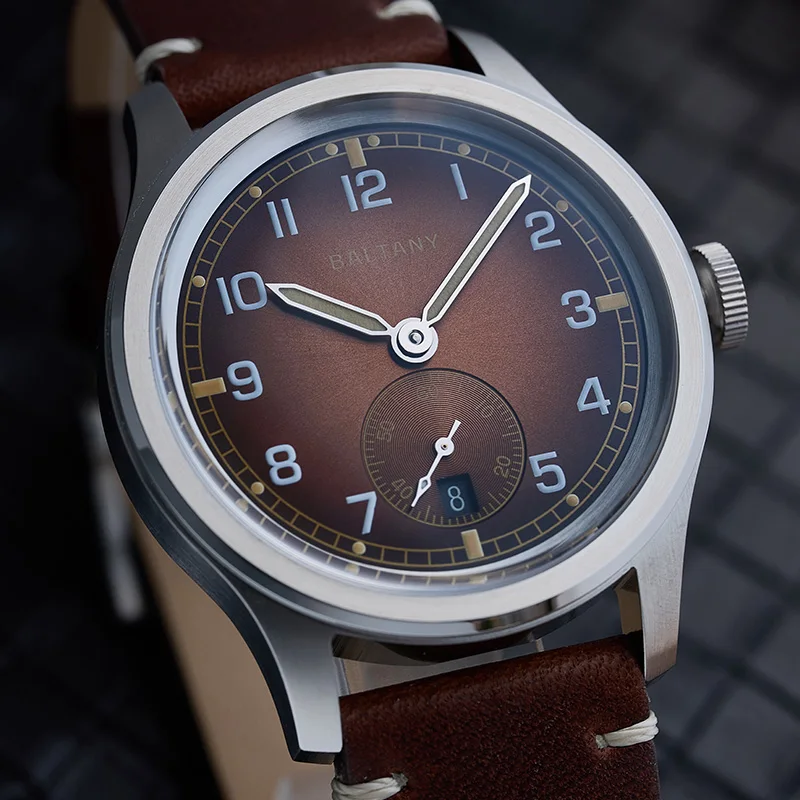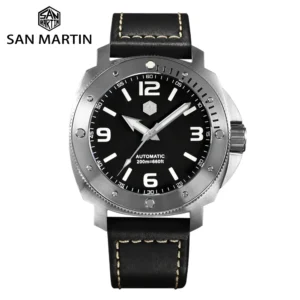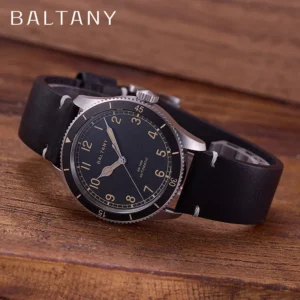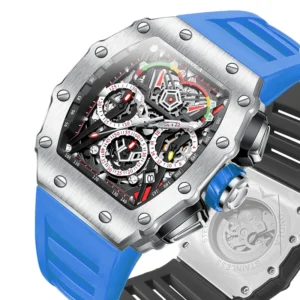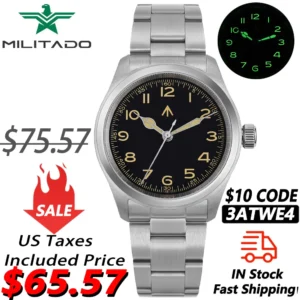Introduction
Military watches represent a fascinating intersection of precision engineering and practical necessity. Born from the demands of warfare, these timepieces have evolved from simple battlefield tools into enduring style icons that influence watch design to this day. More than just timekeeping devices, military watches have consistently pushed the boundaries of durability, functionality, and reliability under the most extreme conditions imaginable.
Throughout history, the rigorous demands of military service have driven innovation in watch design. Features we now take for granted—like water resistance, luminous dials, and shock protection—were originally developed to meet specific battlefield requirements. These practical innovations eventually transformed the entire watchmaking industry, establishing standards that benefit civilian timepieces as well.
What’s particularly remarkable about military watches is their enduring appeal beyond the battlefield. Models like the Rolex Submariner, Hamilton Khaki, and Casio G-Shock have transcended their utilitarian origins to become style statements and collectors’ items. Their rugged aesthetics and proven reliability continue to attract enthusiasts who appreciate both form and function in equal measure.
In this article, we’ll explore the fascinating evolution of military field watches through the decades, tracing their development from crude trench watches of World War I to the high-tech tactical timepieces of today, revealing how military necessity has consistently shaped the watches we wear.
Early Origins: Trench Watches of World War I (1914-1918)
The First World War marked a pivotal moment in horological history—the transition from pocket watches to wristwatches as practical military tools. Before WWI, wristwatches were primarily considered feminine jewelry, while men carried pocket watches. However, the demands of trench warfare quickly demonstrated the impracticality of fumbling with a pocket watch while coordinating attacks or operating weapons.
This necessity gave birth to the “trench watch,” essentially a hybrid design that adapted pocket watch movements into wearable timepieces for officers. These early military wristwatches featured several distinctive characteristics that set them apart from civilian models:
- Wire lugs soldered onto pocket watch cases to attach straps
- Protective metal “shrapnel guards” or wire cages over the crystal
- Luminous radium dials and hands for nighttime readability
- Oversized crowns designed for manipulation while wearing gloves
- Durable leather straps that could withstand harsh conditions
Manufacturers like Omega, Longines, and Zenith, who had previously focused on pocket watches, quickly adapted their production to meet military demands. The officers who wore these early wristwatches often purchased them privately, but their practical advantages were soon recognized by military authorities, leading to more standardized designs.
The evolution from trench to field watches during this period laid the groundwork for purpose-built military timepieces that would continue to evolve through subsequent conflicts, establishing the wristwatch as an essential piece of military equipment rather than merely an accessory.
Between the Wars: The Field Watch Takes Shape (1920s-1930s)
The interwar period witnessed significant refinement of military watch design, moving away from adapted pocket watches toward purpose-built wristwatches. As soldiers returned home from WWI with their trench watches, civilian adoption of wristwatches grew dramatically, creating a feedback loop where civilian watch advancements influenced military designs and vice versa.
This period saw several important developments that would define military watches for decades to come:
- More integrated case designs with stronger, fixed lugs
- Improved water and dust resistance through better case engineering
- Standardization of dial layouts emphasizing legibility and simplicity
- Early anti-magnetic properties to protect against equipment interference
- Development of dedicated pilot watches with navigation functions as military aviation expanded
Manufacturers began producing watches specifically designed for military purposes rather than adapting existing models. These interwar designs established the archetypal military field watch: clean, legible dials with bold Arabic numerals, minimal decorative elements, and robust construction prioritizing function over form.
Additionally, this era saw the emergence of specialized aviation timepieces as air forces became increasingly important military branches. These early pilot watches featured larger cases for improved readability and oversized crowns for operation while wearing flight gloves—design elements that would later influence civilian watch trends.
For those interested in owning a modern interpretation of these historical designs, today’s automatic field military watches capture the essence of these interwar timepieces while incorporating contemporary materials and movements.
World War II: The Golden Age of Military Watches (1939-1945)
World War II represents the defining era for military watch development, when massive production needs and strict military specifications created standardized timepieces that would influence watch design for generations. Unlike the private purchase of watches during WWI, WWII saw governments issuing purpose-built timepieces as standard equipment, resulting in large-scale production and rigorous standardization.
American A-11 Specification
The American A-11 specification produced what many consider the archetypal military watch. Manufactured by companies like Elgin, Waltham, and Bulova, these watches featured:
– Black dials with white markings for maximum contrast
– Hacking seconds function (the ability to stop the second hand by pulling the crown)
– Precise movements that could withstand various environmental conditions
– Minimal, highly legible designs with emphasis on functionality
British “Dirty Dozen” WWW Watches
The British War Department commissioned twelve watch companies to produce the WWW (Watch, Wrist, Waterproof) for military use. These watches, collectively known as the “Dirty Dozen,” shared common specifications while maintaining subtle manufacturer differences.
German Pilot Watches
The German Luftwaffe equipped pilots with distinctive B-Uhren (observer watches) featuring:
– Extra-large 55mm cases for cockpit visibility
– Oversized crowns for operation while wearing flight gloves
– Highly legible layouts with triangle markers at 12 o’clock
– Accuracy certified to chronometer standards
Early Specialized Dive Watches
Naval operations drove the development of water-resistant watches, laying the groundwork for post-war dive watch innovation with improved gaskets, screw-down crowns, and more robust case designs.
These WWII designs established fundamental principles of military watch design that remain influential today. The functionality-first approach resulted in watches that were not only effective tools but also possessed a timeless aesthetic that continues to appeal to watch enthusiasts. For a deeper understanding of this pivotal era, the complete history of field watches in military contexts provides fascinating details about how these timepieces shaped modern watch design.
Post-War Specialization: Dive Watches and Chronographs (1950s-1960s)
The Cold War era brought unprecedented specialization to military timepieces as navies, air forces, and ground troops required increasingly tailored equipment for specific operational environments. This period saw military watches evolve from general-purpose tools to highly specialized instruments designed for particular missions and conditions.
Naval forces drove significant innovation in dive watch technology. The need for reliable underwater timing devices for combat divers and submarine operations led to the development of what we now recognize as the modern dive watch. Key innovations included:
- Rotating timing bezels that allowed divers to track elapsed time underwater
- Improved water resistance through better case engineering and gasket technology
- Screw-down crowns to prevent water ingress at depth
- Highly luminous markers and hands for underwater visibility
- Secure, expandable bracelets or durable rubber straps
Iconic models like the Blancpain Fifty Fathoms (developed for French combat swimmers) and the Rolex Submariner (later adopted by various naval forces) established design conventions that define dive watches to this day.
For aviation applications, chronograph watches with additional timing functions became essential equipment. Military pilots used these sophisticated watches for navigation, fuel calculations, and mission timing. Features included:
- Multiple subdials for tracking elapsed time
- Flyback functions allowing instant chronograph reset and restart
- Tachymeter scales for speed calculations
- Highly legible dials optimized for cockpit conditions
Meanwhile, traditional field watches continued to evolve for infantry use, incorporating improved shock resistance, antimagnetic properties, and more durable materials. The specialized requirements of Cold War military operations pushed watchmakers to develop timepieces that were not merely accessories but crucial mission equipment.
Today’s professional-spec dive watches continue this tradition of robust engineering, incorporating the design DNA established during this innovative period while utilizing modern materials and manufacturing techniques.
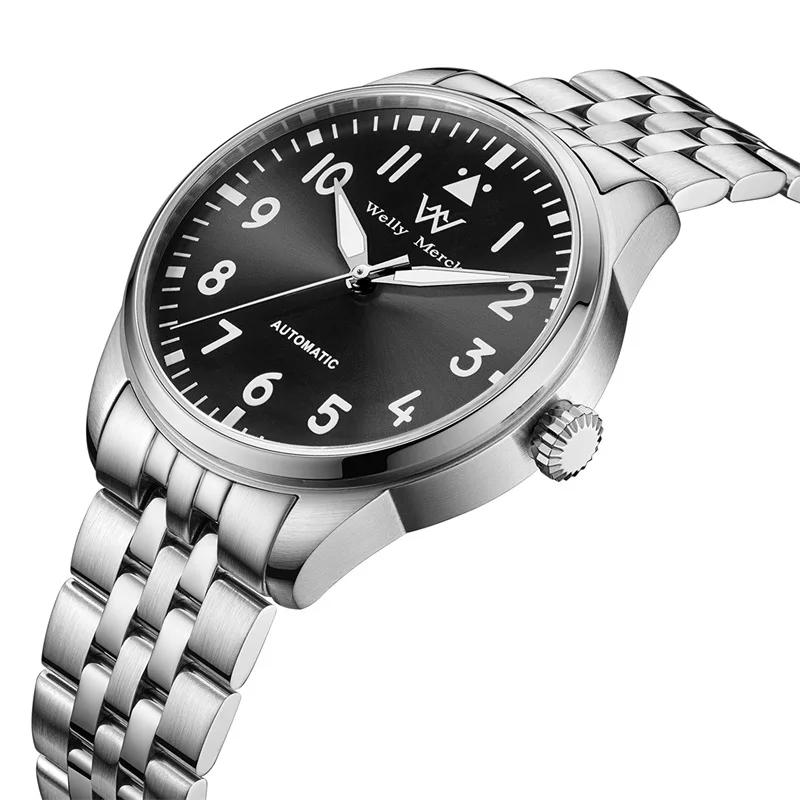
The Vietnam Era: Rugged Field Watches and Special Forces Timepieces (1960s-1970s)
The Vietnam conflict presented unique challenges for military timepieces, with humid jungle conditions, rough terrain, and unconventional warfare demanding watches that could withstand extreme environmental stress. During this period, military watches emphasized durability, reliability, and adaptability to harsh conditions.
Standard-issue field watches evolved to meet these demands with several key improvements:
- Transition from radium to safer tritium luminous materials
- Enhanced water resistance to withstand tropical humidity and monsoon conditions
- Greater emphasis on shock resistance and durability
- Simplified designs focusing on reliability under adverse conditions
- Widespread adoption of nylon “G10” straps (predecessors to today’s NATO straps)
Perhaps most notably, this era saw the rise of special forces units adopting commercial dive watches rather than standard-issue timepieces. Models from Rolex, Seiko, and Doxa became unofficial equipment for elite units like Navy SEALs, who valued their superior water resistance and durability compared to standard-issue watches.
Government-issued timepieces from manufacturers like Hamilton, Benrus, and Marathon featured utilitarian designs with emphasis on function over form. The MIL-W-3818 and MIL-W-46374 specifications guided these watches, which were produced in large quantities for general service use.
The practical needs of Vietnam-era combat drove innovations in watch durability that would influence both military and civilian timepieces for decades. These battle-proven designs continue to inspire military-inspired automatic watches available to enthusiasts who appreciate their rugged functionality and historical significance.
The Quartz Revolution: Electronic Precision Meets Military Toughness (1970s-1980s)
The advent of quartz watch technology in the late 1960s and early 1970s revolutionized military timekeeping. Quartz watches offered unprecedented accuracy, reliability, and reduced maintenance requirements—all valuable attributes for military applications. This technological shift marked the first major departure from mechanical movements in military watches since their inception.
Military forces quickly recognized the advantages of quartz technology for field operations:
- Superior accuracy with deviations measured in seconds per month rather than minutes
- Battery-powered operation eliminating the need for daily winding
- Reduced maintenance requirements with fewer moving parts
- Lower production costs allowing wider distribution to personnel
- Simplified operation under combat conditions
The British Ministry of Defence was among the first to widely adopt quartz technology with the G10 watch specification. Manufactured primarily by CWC (Cabot Watch Company), these straightforward quartz watches became standard issue across British forces, earning the nickname “G10” after the requisition form used to issue them.
In the United States, Marathon began supplying quartz watches to military specifications, while Seiko provided specialized models to various international forces. These watches maintained the clear, functional aesthetic of their mechanical predecessors but incorporated the reliability of quartz movements.
This technological transition represented how military necessity forged the modern field watch, balancing traditional design elements with cutting-edge technology. While purists might have lamented the shift away from mechanical movements, the practical advantages of quartz technology for military applications were undeniable, establishing electronic watches as the new standard for service use.
Modern Tactical Timepieces: Digital Revolution and Advanced Functions (1980s-2000s)
The late 20th century witnessed a digital revolution in military timepieces as LCD and LED display technologies created opportunities for expanded functionality beyond simple timekeeping. This period saw the emergence of purpose-built “tactical” watches designed specifically for military use, incorporating multiple functions relevant to combat operations.
These advanced tactical watches introduced capabilities previously impossible in analog timepieces:
- Digital displays with multiple time zones for global operations
- Countdown timers and chronographs with split-second precision
- Altitude, barometer, and compass functions for navigation
- Customizable alarms for mission timing
- Electroluminescent backlighting for covert nighttime visibility
- Extended battery life and early solar power technology
Casio’s G-Shock, introduced in 1983, exemplified this new approach to military watch design with its focus on extreme durability. The “Triple 10” concept—10-year battery life, 10-bar water resistance, and survival of a 10-meter drop—established a new standard for ruggedness that appealed to military users worldwide. Special forces and regular troops alike adopted G-Shocks as unofficial equipment, appreciating their combination of toughness and functionality.
Other manufacturers like Suunto developed specialized military watches with advanced features like altimeters and barometers, particularly useful for special operations in variable terrain. Timex’s Ironman series found favor among military personnel for its affordability and practical functions.
These digital tactical watches represented a significant departure from traditional military timepieces, prioritizing expanded functionality alongside the traditional military watch virtues of durability and reliability. The military watch features engineered for extremes during this period pushed the boundaries of what wristwatches could accomplish in battlefield conditions, transforming them from simple timekeepers into multi-functional tactical equipment.
Contemporary Military Watches: Advanced Materials and Heritage Designs (2000s-Present)
Today’s military timepieces follow two parallel but distinct development paths: cutting-edge tactical watches utilizing advanced materials and technology, and heritage-inspired designs that honor the aesthetic traditions of military watches while incorporating modern engineering.
Modern military-issue watches leverage materials science to create timepieces of unprecedented durability and functionality:
- Titanium and carbon composite cases offering superior strength-to-weight ratios
- Ceramic components resistant to scratches and corrosion
- PVD and DLC coatings providing low-reflectivity surfaces and enhanced durability
- Advanced luminous compounds offering extended glow without radioactive materials
- Sapphire crystals with anti-reflective coatings for clarity and scratch resistance
- Integration with GPS and Bluetooth technologies for expanded capabilities
Special operations units often use high-tech watches from manufacturers like Suunto, Garmin, and Luminox, which offer specialized functions relevant to modern warfare, including GPS navigation, health monitoring, and night vision compatibility.
Simultaneously, there has been a resurgence of interest in traditional military watch design. Many manufacturers now produce heritage-inspired timepieces that capture the aesthetic of classic military watches while incorporating modern movements and materials. These watches appeal to enthusiasts who appreciate the clean, functional design language established over decades of military watch evolution.
This blend of cutting-edge technology and respect for design heritage ensures that military watches remain relevant both as practical tools and as expressions of a distinctive aesthetic tradition. Today’s tactical automatic watches represent the culmination of this evolutionary journey, combining mechanical craftsmanship with contemporary materials engineered for extreme conditions.
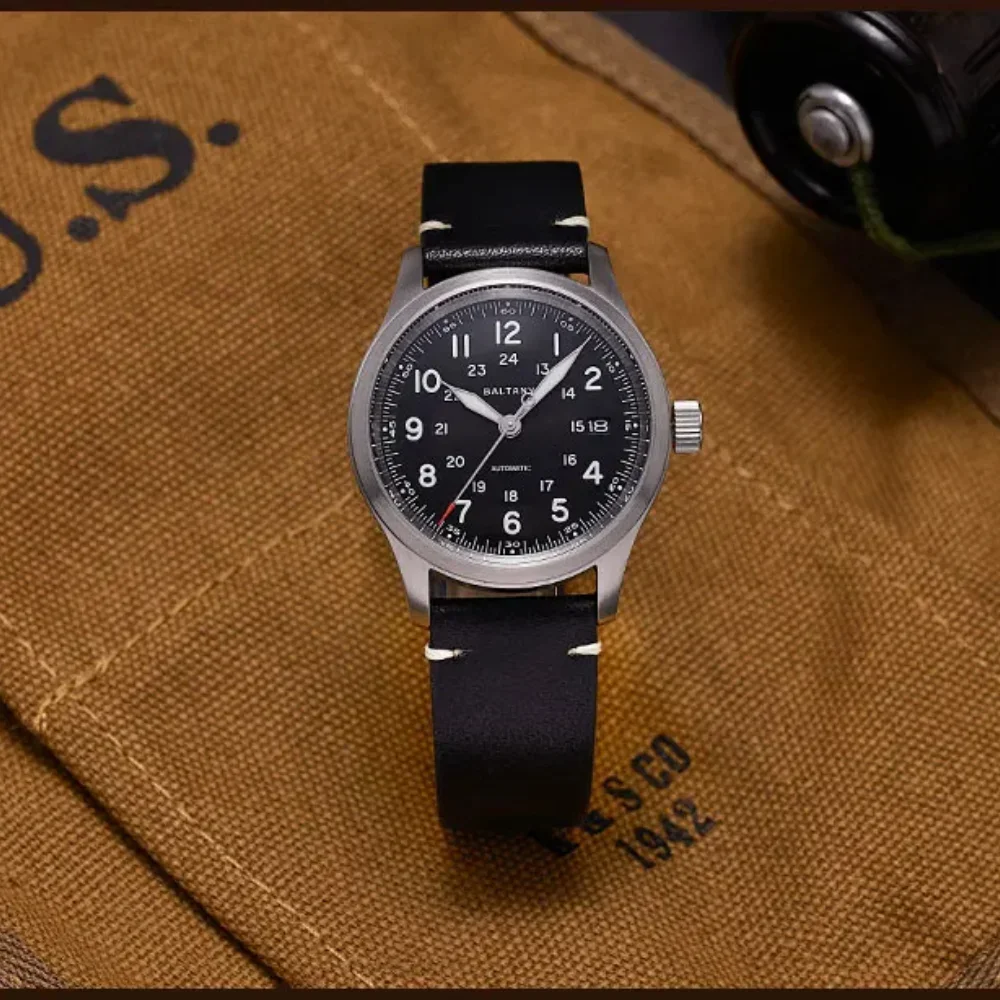
Military Inspired Automatic Watches, Rugged Automatic Watches, Tactical Automatic Watches
Price range: $852.14 through $994.60 Select options This product has multiple variants. The options may be chosen on the product pageBronze Automatic Watches, Military Inspired Automatic Watches, Professional Spec Dive Watches
Price range: $1,442.21 through $1,442.82 Select options This product has multiple variants. The options may be chosen on the product pageProfessional Spec Dive Watches, Titanium Automatic Watches
$574.74 Select options This product has multiple variants. The options may be chosen on the product pageClassic Pilot Watches, Military Inspired Automatic Watches
$561.00 Select options This product has multiple variants. The options may be chosen on the product pageRugged Automatic Watches, Unique Automatic Watches
Price range: $228.96 through $231.10 Select options This product has multiple variants. The options may be chosen on the product pageClassic Field Watches, Military Inspired Automatic Watches
Price range: $280.87 through $338.51 Select options This product has multiple variants. The options may be chosen on the product page
Essential Elements of Military Watch Design
Despite evolving across multiple decades and conflicts, military watches maintain certain fundamental design elements that define their character and functionality. These enduring principles represent the core DNA of military timepiece design, balancing form and function in service of reliability under extreme conditions.
Legibility stands as perhaps the most critical element of military watch design. High-contrast dials—typically black with white markings or vice versa—ensure readability in variable lighting conditions. Large, simple numerals and distinct hands minimize the chance of misreading the time when seconds count. This emphasis on clear, immediate time reference has influenced watch design well beyond military applications.
Durability represents another cornerstone of military watch philosophy. From reinforced case construction to shock-resistant movements, military watches are built to withstand conditions that would destroy ordinary timepieces. This focus on ruggedness has driven innovations in case materials, crystal strength, and movement shock protection that benefit the entire watch industry.
Reliability under adverse conditions separates true military watches from merely military-styled timepieces. Whether mechanical or quartz, movements must maintain accuracy despite exposure to extreme temperatures, humidity, vibration, and magnetic fields. This demanding requirement has pushed watchmakers to develop more robust movement technologies and testing protocols.
Practicality governs every aspect of military watch design. Features are included only if they serve a specific purpose; decorative elements are minimized or eliminated entirely. From rotating bezels for tracking elapsed time to luminous materials for nighttime readability, every component must justify its existence through functionality rather than aesthetics.
Versatility across environments and missions completes the military watch design philosophy. Whether in desert heat, arctic cold, high altitude, or underwater, military timepieces must perform consistently and predictably. This requirement for environmental adaptability has created watches that function reliably virtually anywhere humans can operate.
These key developments in army-issued timepieces have created a distinct design language that balances form and function, establishing military watches as the ultimate expression of purposeful watch design. Their influence extends far beyond military applications, shaping the development of tool watches across numerous categories.
Military Watch Influence on Civilian Timepieces
The influence of military watches extends far beyond the battlefield, shaping civilian watch design in profound and lasting ways. Many of today’s most popular watch styles trace their lineage directly to military timepieces, with manufacturers adapting battlefield-proven designs for consumer markets while retaining their functional DNA.
The dive watch category illustrates this military-to-civilian transition perfectly. Watches originally developed for naval frogmen and combat divers in the 1950s evolved into mainstream consumer products that dominate luxury and sports watch markets today. Models like the Rolex Submariner and Omega Seamaster began as military tools but now represent status symbols and style icons while maintaining their functional capabilities.
Field watches have similarly transitioned from military issue to civilian wardrobes. Their clean, legible designs and rugged construction appeal to consumers seeking watches that project authenticity and purpose. Manufacturers have adapted these utilitarian designs for civilian tastes by refining proportions, adding subtle decorative elements, and using premium materials while preserving the essential military aesthetic.
Even high-end luxury watchmakers regularly draw inspiration from military watch heritage, creating sophisticated reinterpretations of utilitarian designs at premium price points. This widespread influence demonstrates how the principles of good military watch design—legibility, durability, reliability, and purposeful functionality—resonate with consumers who value these qualities in their timepieces.
For those drawn to this enduring style, classic field watches offer contemporary interpretations of military designs that work seamlessly with modern wardrobes while honoring their functional heritage.
Collecting Vintage Military Watches: What to Look For
The collecting of genuine military watches has grown increasingly popular, driven by their historical significance, authentic utilitarian design, and the stories they carry. However, navigating this specialized collecting area requires knowledge and careful attention to detail to distinguish authentic military timepieces from civilian models or reproductions.
Authentic military watches typically feature specific markings that identify their service history. These often include branch of service designations, broad arrow or pheon marks (particularly on British military watches), NSN (NATO Stock Numbers), and issue dates. These markings are usually found on the caseback, though some appear on the dial. Understanding the correct format and placement of these markings for different military forces and time periods is essential for authenticating military watches.
Provenance adds significant value to military timepieces. Documentation connecting a watch to its military service—such as issue papers, service records, or photographic evidence—can substantially increase both historical interest and monetary value. However, such documentation is relatively rare, making watches with proven provenance particularly desirable among serious collectors.
When evaluating vintage military watches, collectors should consider these important factors:
- Correct and original military markings appropriate to the claimed era and branch
- Period-appropriate technical features and specifications
- Original dial and hands with matching luminous material aging
- Unpolished case preserving original finish and sharp edges
- Correct movement for the specified military contract
- Appropriate wear consistent with military use rather than refinished condition
Understanding the specific requirements of pilot watch design across aviation eras or the evolution of dive watches for naval forces can help collectors identify authentic military examples and appreciate their historical context. Resources like military watch reference books, specialist forums, and reputable dealers specializing in military timepieces provide valuable education for collectors entering this fascinating area.
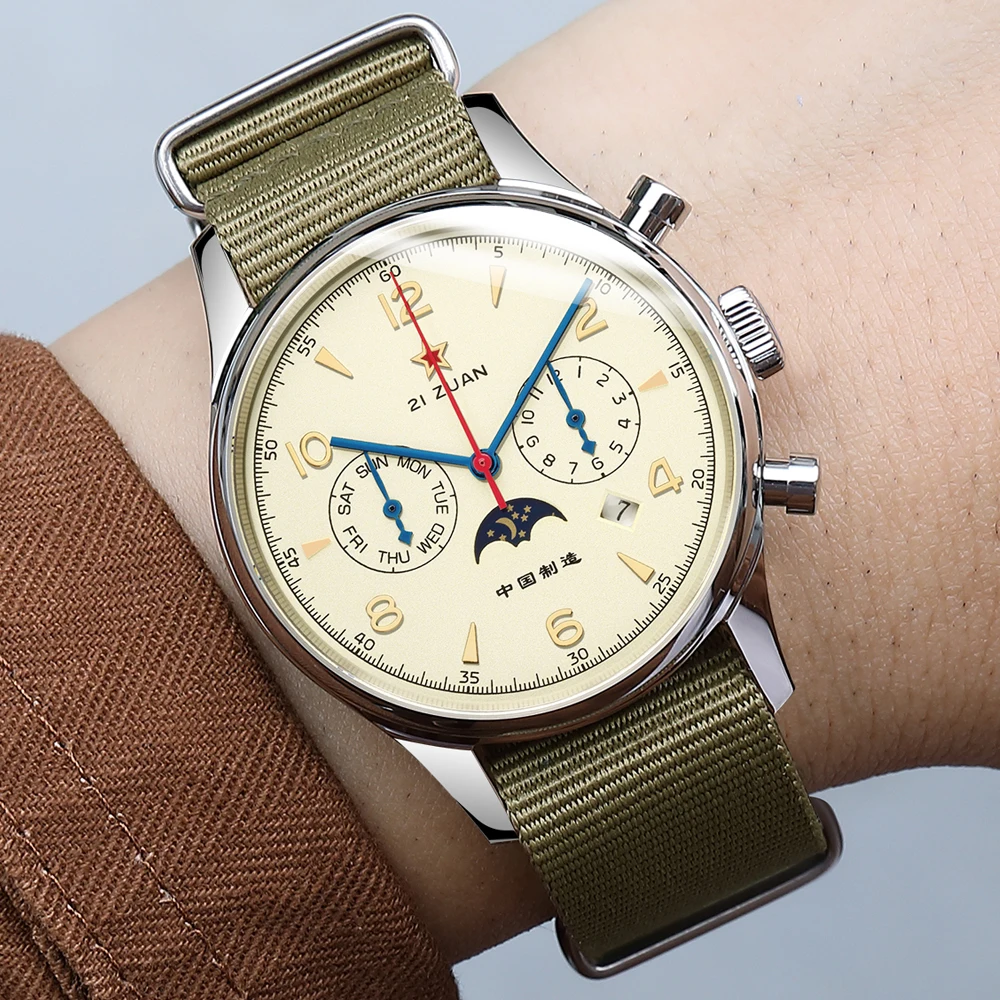
Conclusion: The Timeless Appeal of Military Watch Design
The journey of military watches from purely functional battlefield tools to coveted style icons represents one of the most fascinating evolutionary paths in the world of horology. What began as a practical solution to the limitations of pocket watches in combat has developed into a distinct design language that influences watchmaking far beyond military applications.
The enduring appeal of military watches stems from their perfect marriage of form and function. Unlike watches designed primarily for aesthetic appeal, military timepieces earned their design elements through practical necessity. The high-contrast dials, robust cases, and clear markers weren’t created to follow fashion trends but to perform reliably when lives depended on them. This authenticity of purpose gives military watches a genuineness that resonates with watch enthusiasts and casual wearers alike.
As we’ve seen throughout this historical journey, military requirements have consistently driven innovation in watchmaking. From luminous dials to water resistance, from shock protection to antimagnetic cases, countless features we now take for granted originated as solutions to military challenges. Today’s titanium automatic watches and other advanced timepieces continue this tradition, incorporating materials and technologies that push the boundaries of what a wristwatch can achieve while maintaining the clear design language established by their historical predecessors.
The military watch stands as a testament to purpose-driven design—proof that when form truly follows function, the result can be both supremely practical and timelessly appealing.

